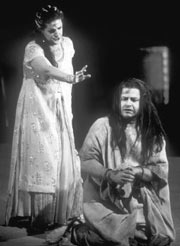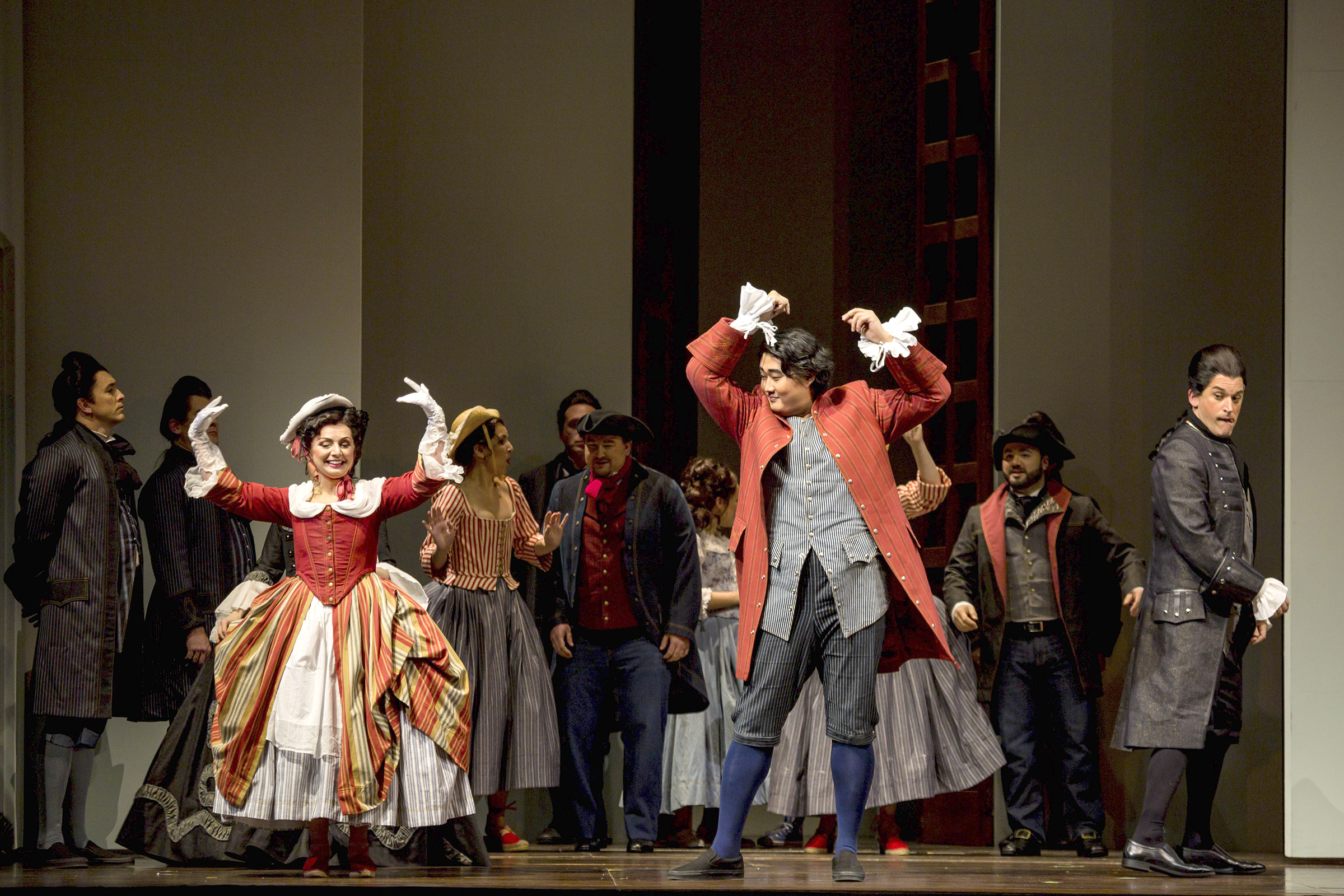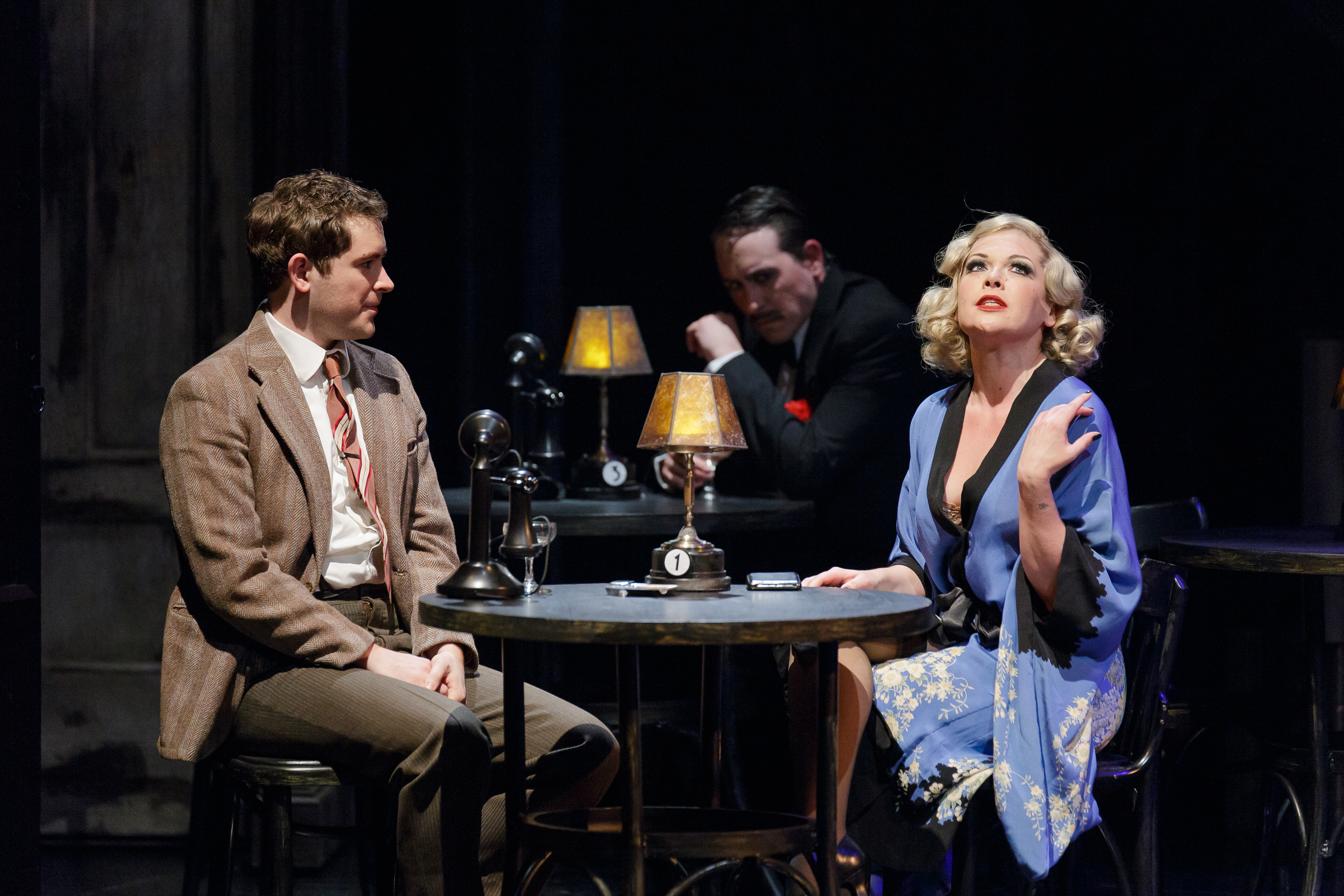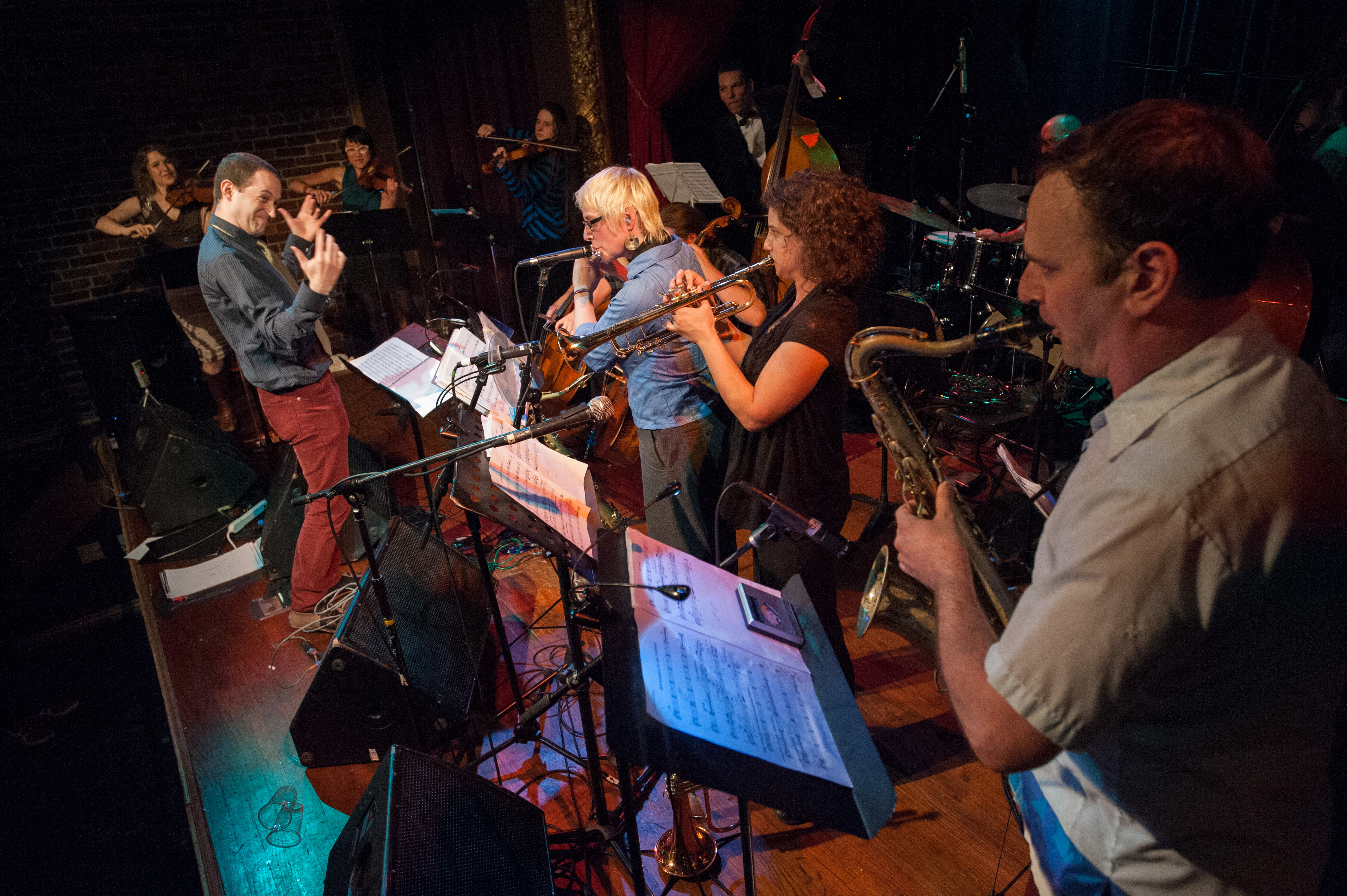SALOME
Seattle Opera Seattle Center, Mercer Arts Arena, 387-7676, $35-$107 7:30 p.m. Wed., Fri., and Sat. ends Sat., April 6
SEATTLE OPERA’S new production of Richard Strauss’ Salome is a battle of clashing conceptions that entertains and impresses but doesn’t quite pack the unified punch that it could.
Admittedly, this work presents a director with a challenge from the start. Oscar Wilde’s 1892 play—expanding on a brief biblical reference to the princess Salome and her thwarted desire for John the Baptist, whom she eventually orders beheaded—was translated into German; Strauss then trimmed this translation and took it as the text for his 1905 opera. But his gorgeous score italicizes every moment with sensual curlicues and visceral thrust—overlooking the text’s dreamlike atmosphere of religious ritual, its incantatory repetitions and ancient phraseology.
So it’s the director’s job somehow to reconcile the Dionysian score and Apollonian text. However, director Sharon Ott has asked for a naturalistic acting style—”naturalistic” in clich餠operatic terms, that is (lots of extravagant arm gestures)—that jells with neither quality. Ott opts for dysfunctional-family melodrama and flat-out statement rather than the subtle insinuation that the perfumed text seems to invite. Everyone in the cast plays, dutifully, with their dials set to 11, but chills are sent through no spines.
Both Nina Warren (the Gold Cast’s Salome in the Saturday opening-night performance) and Eilana Lappalainen (in the Sunday matinee’s Silver Cast) give fearless performances of the demanding title role. They both dance the climactic “Dance of the Seven Veils” themselves, hurtling all over that stage for a solid nine minutes, followed by a final scene that calls for more soaring high notes than a month of Wagner. But their, or Ott’s, basic approach to the character is coquettish, petulant, girly-girly, and more than a little high-strung. It left me wondering where Salome’s allure—the power to drive an army captain to suicide and a king to murder—came from. Flirting and hair tossing don’t explain it; we need to see Salome’s natural charisma and towering will.
And what, similarly, does Salome see in this production’s Jochanaan (the opera’s name for John the Baptist)? In three interlinked arias, Salome claims to be drawn to his body, his hair, and his lips, but there must be something more she wants. Richard Paul Fink’s acting gives no clue; he staggers around in a stagy sort of psychosis that belies both his authoritative, auditorium-filling voice and the choralelike grandeur of his music. There’s the key—it must be his power that Salome covets. He’s the first man she’s met with a will as granitic as her own, so he must be conquered. Sex for her is a means, not an end. Sure, opera characters fall in love at first sight all the time, but this time it makes sense—if you set Jochanaan up as an immovable moral object against Salome’s irresistible sensual force. Neither one, of course, comes out alive. (The destructiveness of desire was a theme that ran through not only Wilde’s work, but his life as well. As he epigrammatically put it in “The Ballad of Reading Gaol”: “Each man kills the thing he loves.”)
Just as fearless as the two Salomes is Joyce Castle as Salome’s mother, Queen Herodias, a blowsy, goblet-clutching slattern—Mrs. Robinson as Cruella De Vil, as directed by John Waters. Peter Kazaras’ King Herod recalls Peter Ustinov’s slave trader in Spartacus—inflated and epicene, the production’s one truly disturbing character. (When he invites his stepdaughter/ niece Salome to dine, he holds a dangly bunch of grapes in front of his crotch and presses them against her cheek.)
The production’s other discordant element is Robert Dahlstrom’s stark, Escher-esque set, all slanted walls and razor edges that play mind games with perspective. It, too, is gorgeous, especially as flooded by lighting designer Peter Maradudin’s slabs of brilliant color (my favorite combination: burnt orange-gold vs. fluorescent cyan). But it seemed to come at the opera from a different angle than the direction.
The Seattle Symphony sounds its glossy best. Conductor Gerard Schwarz has such a knack for pacing this sort of vast vocal and orchestral canvas, whether it’s a Strauss opera, a Mahler symphony, or a Berlioz oratorio—lingering over each moment yet sweeping the listener along. His direction was the one element that helped tie everything together.







